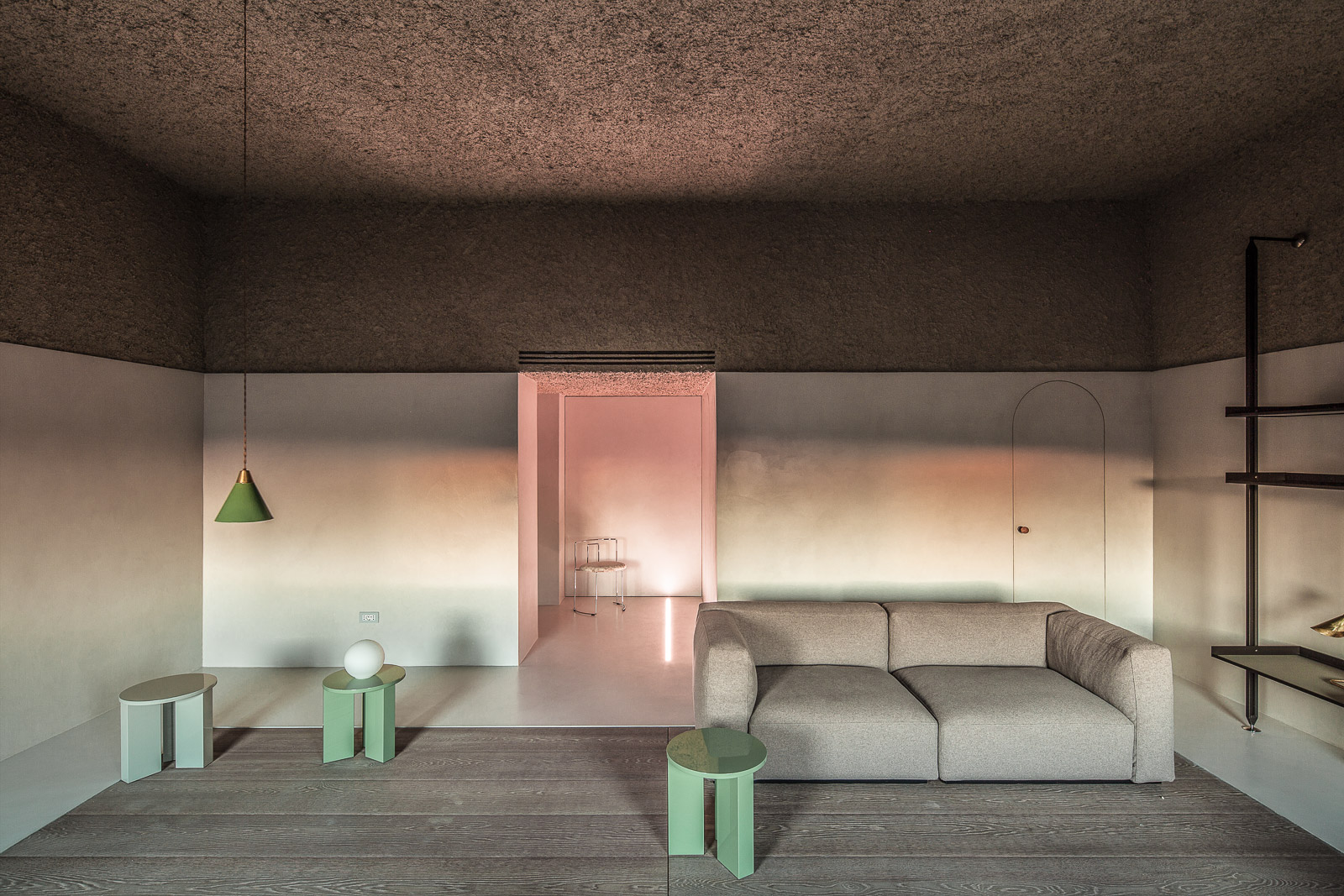Summed up in the project House of Dust. His aesthetic manifesto. There’s pink, a synonym for beauty; the reference to history told by dust settling like powder on the walls; contrasts (between smooth and rough surfaces); the harmonies of classical art; and architecture that becomes narrative.
‘My ambition is to build homes that transcend time, with a long-term vision. Dwellings that remain beautiful, without ageing. A bit like wine’.
‘Contexts have different aesthetic variants, in colours (each tone has harmonic potential) and materials: the more natural they are, the more interesting the results. The ceiling of House of Dust, for example, is a traditional mix of lime, pozzolana and sand. Simple. Yet a change in light reveals unexpected nuances’.
‘Pay close attention to the ceiling’, says Cardillo. ‘There’s a creative potential there that’s often overlooked. It’s the place where architecture happens. Now they install spotlights, but once there were frescoes’.
Born in 1975, [Antonino Cardillo] lives between Italy and England, and according to Wallpaper* magazine ‘he is one of the most significant architects of our time’. Balancing ancient and modern languages, in search of timeless codes. His works are monolithic, yet sensuous, flexible and at the same time classical, centred on the use of natural materials. Notable examples include the Sergio Rossi store in Milan and the Nomura Koumuten house in Japan.

The House of Dust in Rome features rustic, almost cavernous ceilings and powder-pink tones. Photography: Antonino Cardillo
